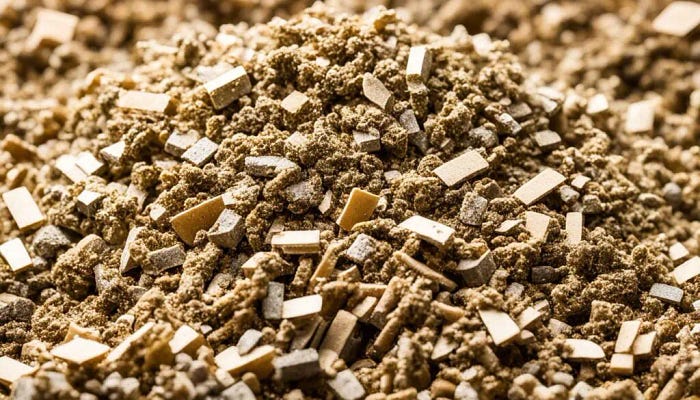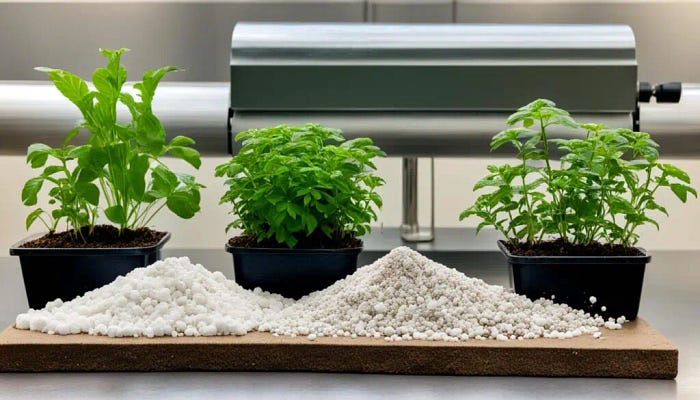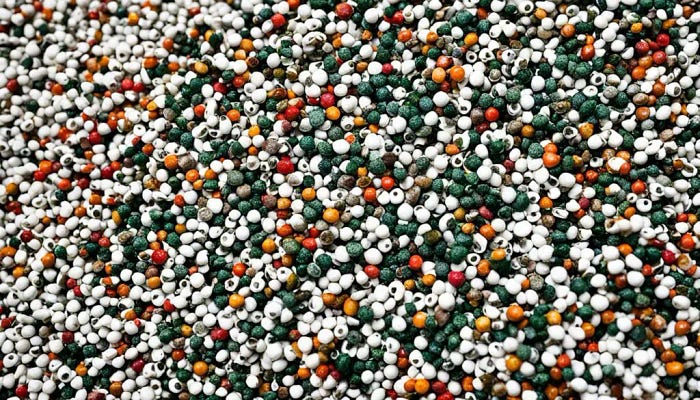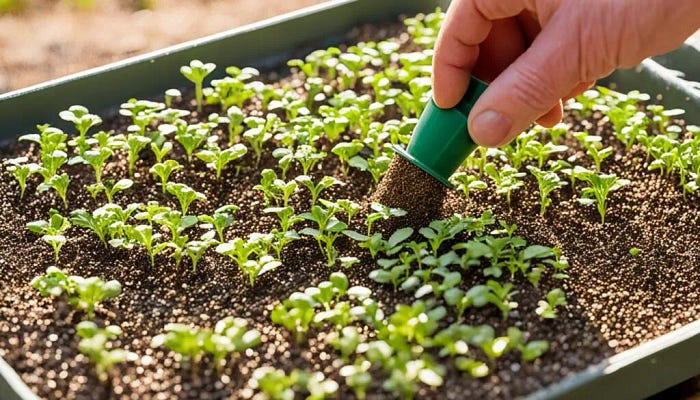
If you love gardening, knowing what perlite and vermiculite bring to the soil is key. They help your plants by improving drainage or holding more moisture. We’ll walk you through the 7 main differences, so your garden can thrive.
What is Perlite?
Perlite is a volcanic glass that turns into a lightweight material after a special heating process. It is used a lot in gardening and construction for its benefits. Perlite is known for its white color and porous texture.
Perlite Characteristics and Properties
Perlite has a neutral pH level, making it great for gardening. It’s perfect for improving soil quality and helping your plants grow better. Since it doesn’t go away, it keeps helping your plants for a long time.
Perlite holds water differently, which is good for improving soil draining. It’s ideal for soils that need better aeration or for plants that don’t like a lot of water. Plus, it’s very light.
How to Use Perlite in Gardening
Adding perlite to your soil can benefit a lot of plants. It’s good for pots, gardens, and even for special plants like succulents. Perlite helps keep the soil from getting too wet.
Perlite is also used for helping new plants grow. It’s great for starting seeds or rooting cuttings without soil. This is because perlite helps control the soil’s temperature and moisture well.
What is Vermiculite?
Vermiculite is a key mineral in gardening. It goes through a heating process to expand into golden-brown flakes. These flakes are spongy and have unique properties.
Vermiculite Characteristics and Properties
One stand-out feature of vermiculite is its great ability to absorb and keep moisture. It can take in water up to four times its weight. This makes it act like a sponge for plants, giving them steady hydration. It’s a top choice for improving how well potting mixes and soil keep water.
Also, vermiculite absorbs and gives back important nutrients to plants. It includes nutrients like potassium, magnesium, and calcium. This helps plants grow strong and healthy.
It’s interesting to note that vermiculite is flat, unlike round perlite. This flat shape makes vermiculite better at holding water. Perlite, on the other hand, is good for quick drainage in wet places like Pennsylvania.
Vermiculite and perlite are both good for organic farming. So, they are great options for gardeners wanting their plants to grow in healthy soil.
Vermiculite is great for starting seeds and growing plants. Its ability to hold moisture helps seedlings grow strong from the start.

In short, vermiculite is an amazing mineral for gardening. Its properties help with soil quality, seed starting, and plant growth.
Key Differences Between Perlite and Vermiculite
Perlite and vermiculite are popular in gardening for different reasons. They help with soil moisture, drainage, and plant types.
In starting seeds, perlite improves airflow in the soil. Vermiculite is king at holding water, which keeps new plant roots from drying out.

The choice between perlite and vermiculite varies with your plants and garden’s needs. Choose perlite for drier plants, or vermiculite for those that like it wet. Knowing these differences helps you pick the best for your garden’s success.
perlite vs vermiculite: Moisture Retention and Drainage
When gardening, choosing between perlite and vermiculite is key for how your plants manage water. Each type affects the soil differently, which is important for your plants’ health.
Perlite for Improved Drainage
Perlite helps water move quickly through soil. This is great for tight or heavy soils or mixes. It adds air pockets, stopping the soil from getting too compact. When soil is too compact, water can’t drain well, which can hurt your plants. Perlite also boosts drainage when mixed with clay soils.
Vermiculite for Better Moisture Retention
Vermiculite keeps the soil moist by holding onto a water well. It’s perfect for plants, like ferns, that like wet soil. Mel’s Mix, famous in gardening, uses vermiculite. It balances water, air, and nutrients for plant roots.
Choosing perlite or vermiculite depends on what your plants need. Perlite is good for dry soil and keeps roots strong. Vermiculite is for plants that need more water, helping the soil stay wet.
Knowing perlite and vermiculite’s roles helps gardeners choose the right one. It’s all about your plants’ needs and how you want the soil to be.

Seed Starting and Propagation
Vermiculite is a top choice for many gardeners when starting seeds. It holds moisture well, helping seeds to sprout and seedlings to grow strong. Because it’s a bit alkaline, it provides perfect conditions for lots of different seeds. This is unlike perlite, which is neutral. Vermiculite’s pH is especially good for some plants.
The main benefit of using vermiculite is its texture. It’s light and acts like a sponge. This property helps avoid a plant disease called “damping off,” which is common among young seedlings. Plus, it can hold three times its weight in water and then slowly let it go. This helps keep seeds and sprouts moist, just as they need.
Vermiculite isn’t just great for seeds. It also works well for making new plants from cuttings and helping roots grow. The way it creates pockets of air in soil improves drainage. And its moisture-holding ability is perfect for keeping cuttings from drying out as they grow roots.
When you’re choosing vermiculite, think about what you’re growing. Big seeds need a rough texture to get started, while tiny seeds and fragile seedlings do better with a finer grade.

While perlite has its uses, vermiculite is often preferred for seeds because of its ability to hold water. Perlite suits plants that like their soil to drain well, like succulents, or to avoid root rot.
Conclusion
Perlite and vermiculite are important soil helpers. They can greatly improve how well your plants grow. It’s key to know what each does, so you can pick the best one for your garden.
Perlite is great for plants that like their soil dry, such as cacti and succulents. On the other hand, vermiculite is perfect for plants that need more water, like maidenhair fern.







